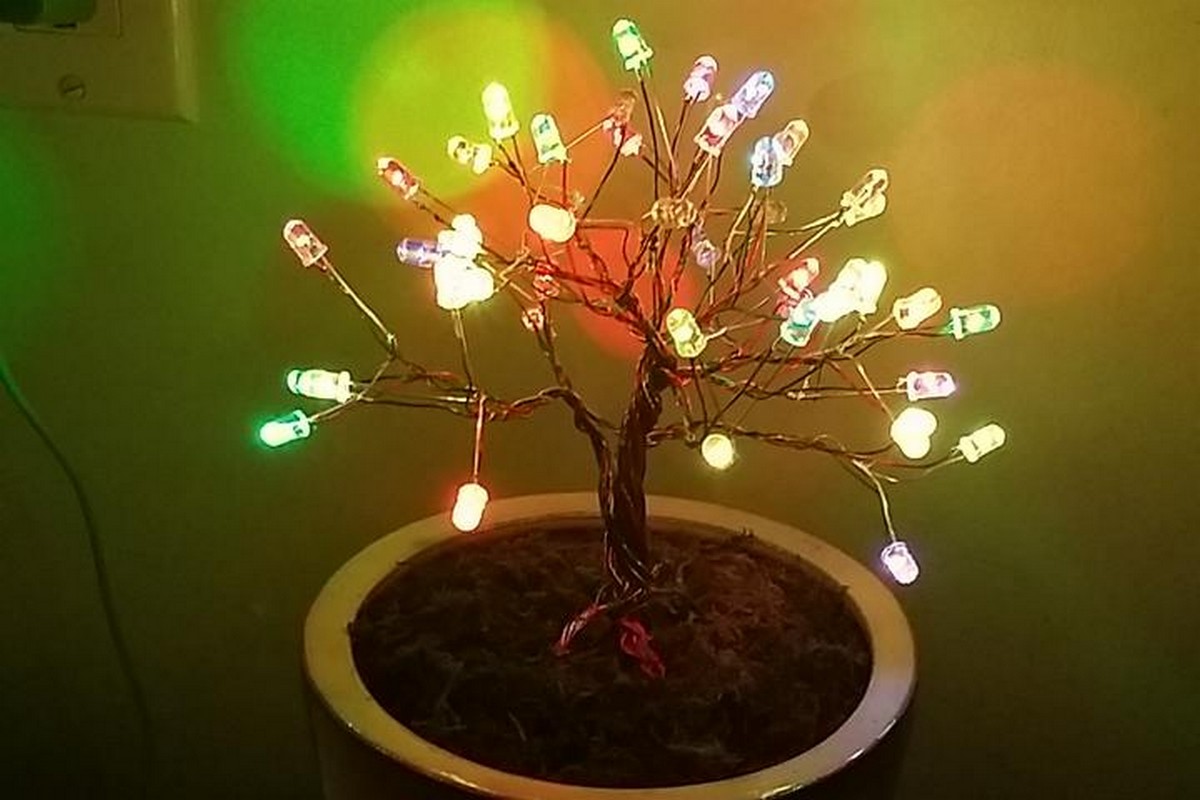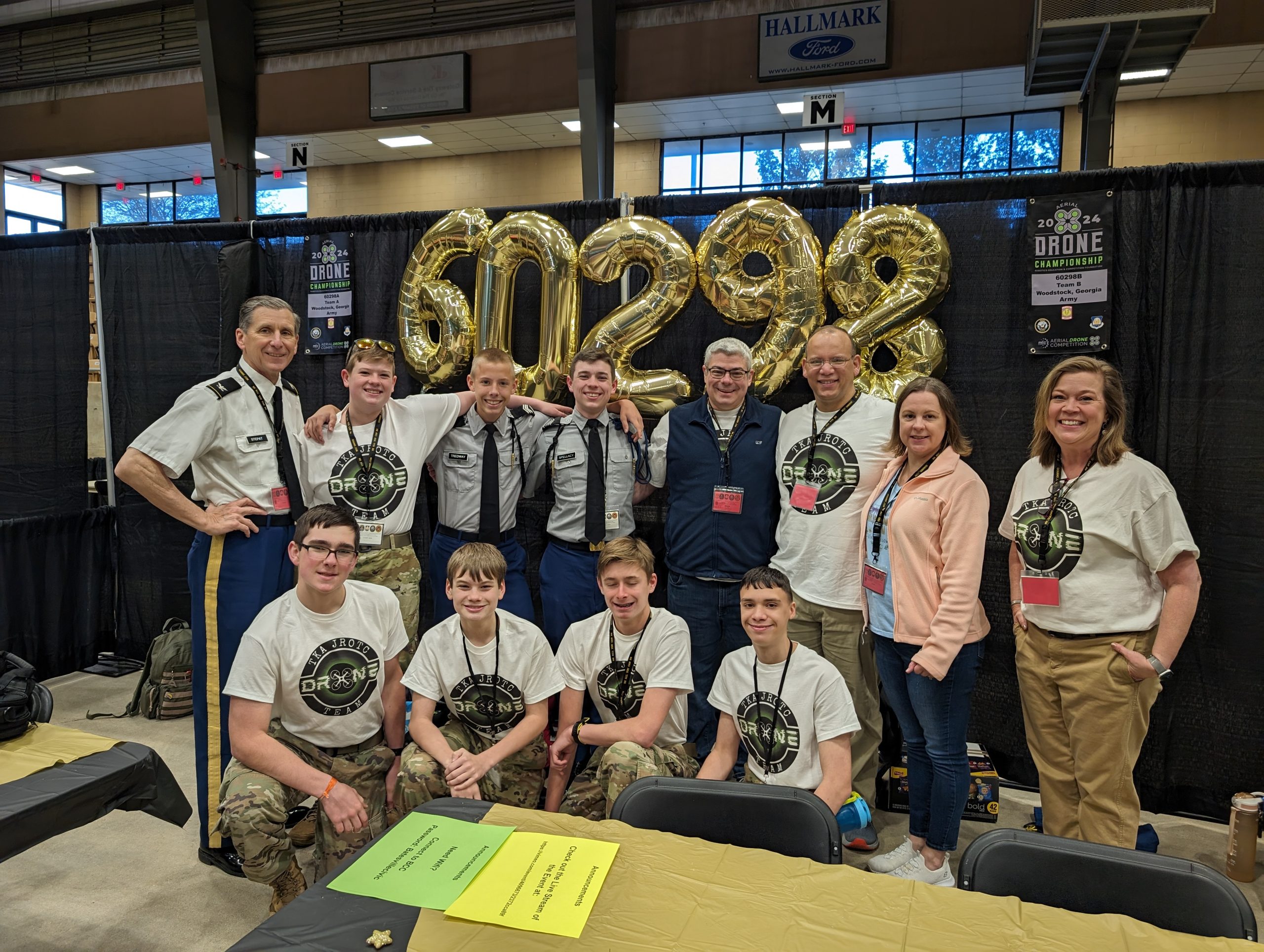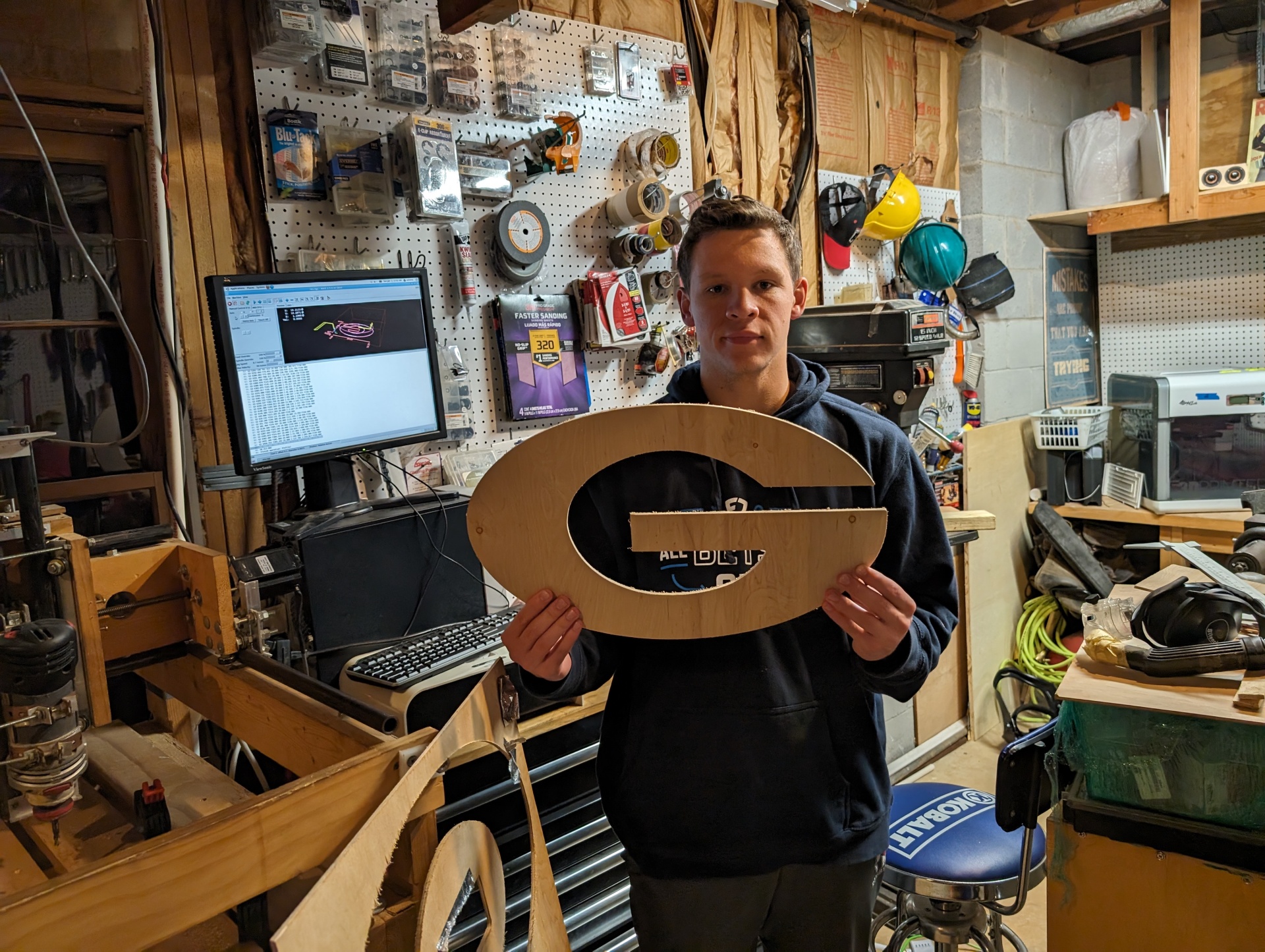

After seeing a small artistic tree made with polished stones, I was inspired to create one with LED as a nightlight for my daughter. The trunk and branches are made with enameled (magnet) wire. The LEDs are automatic rotating RGB so they change colors over time. The first tree used “fast blink” LEDs which change color about once per second, which looking back at it (and when looking directly at it) was somewhat seizure inducing. Later refinements used “slow blink” RGB LEDs that slowly changed from one color to the next over about 5-10 seconds. Interestingly, when powered on, all the LEDs go through the same color shift pattern, but fairly quickly small differences in timing cause the LEDs to be all different colors at all different places in the sequence. It’s quite soothing and almost difficult to tell that they are changing at all.
The hardest part of this project is tinning the magnet wire. Each end of the wire must be stripped of the enamel coating and soldered before (easier) or after (harder) twisting the trunk/branches together. Using two different colors of enameled wire make it easy to discern the positive and negative leads to solder to the LEDs.
The Tree was powered by a 5V 0.5A USB power block for charging cell phones – we called them marshmallows. The real trick there was cutting the USB cord and attaching the tiny little wires to the base of the tree.

In spite of may people wanted a tree, few people made them due to the time involved. But it was a great “learn to solder” project because of so many solder joints required, the low quality required, and the fast feedback loop. We soldered this kit “hot” – the power was connected the whole time you were soldering, so you knew if it was working or if you made a mistake right away. That’s a much better way to learn to solder.
With all that potential Ben and Mike create a much smaller scale kit that was immediately popular. The tree could be built in a single visit to the Makerspace and enjoyed at home that very night. The problem was that it to a lot of prep work to build a kit! The tinning was a pain – I purchased a solder pot, and we even bought an electric enameled wire stripper (if results with thinner wire).

There are a lot more pictures over in google photos






